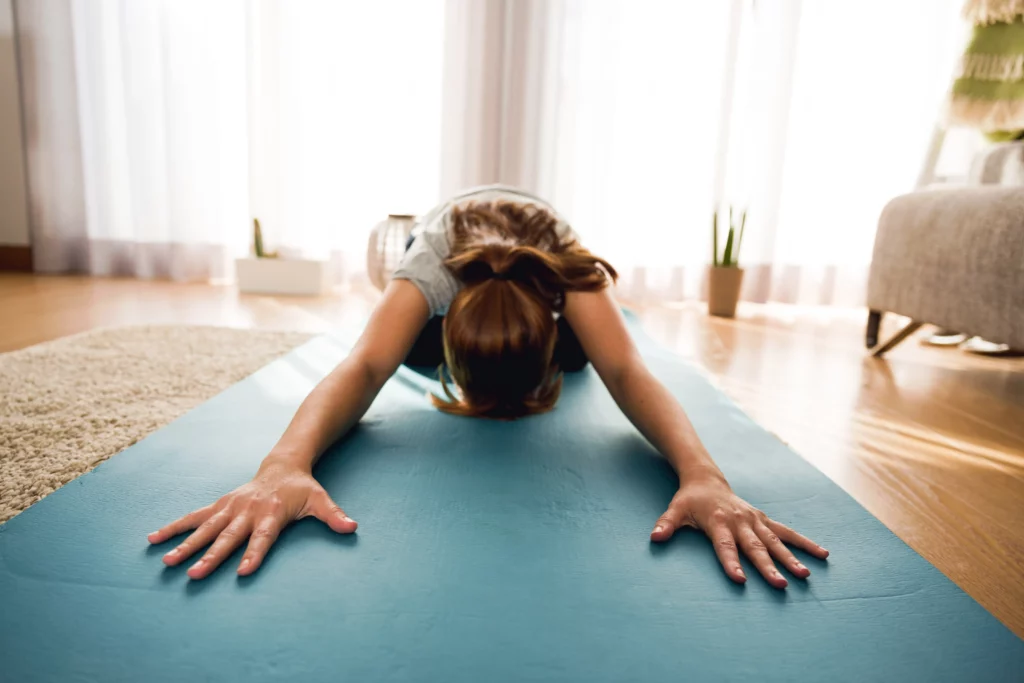The age old question: “to stretch or not to stretch?”
Written by Guy Titman (Senior Physiotherapist at Katie Bell Physiotherapy & Wellness).
What is stretching?
The theory behind stretching is to increase the flexibility of the muscles and tendons, to improve joint range of motion. It also prepares the body for action, can improves performance, decrease recovery time and reduce injury risk.
There are two forms of stretching:
Static stretching involves placing a muscle to its maximum possible range and holding that position for a period of time generally 30 seconds is recommended.
Dynamic stretching involves moving the limb in a smooth, controlled way through its active range of movement to its greatest length and then returning to its starting position.
So how does stretching work?
Your muscles are made up of fibres called actin and myosin that glide back and forward when contracting and relaxing. The body adapts to what demands you put on it, laying down more fibres if the muscle needs to be longer and taking fibres away if placed in a shortened position such as prolonged sitting causing hip flexors and hamstring muscles to become tight.
This comes under the Davis law of “use it or lose it”. Therefore when you stretch the muscles, more fibres are added to make the tissue longer, but only to a degree that your nervous system can cope. Nerves do not like being overstretched but can also adapt to gentle functional stretching.
Frequent, intermittent stretching within comfortable range helps you to gradually remodel yourself into a functional length.
Does stretching improve flexibility? What does the research say?
Yes, there have been many studies looking at whether static stretching improves flexibility. These authors found that static stretching increases joint flexibility, can reduce injury risk and improve recovery (Mason et al 2007 and Petersen et al 2005).
Harvey 2002 completed a literature review on stretching and whether it increased joint flexibility.They included 13 studies, which concluded that regular stretching can increase joint range of movement.
Are there any negative affects of stretching?
Yes immediately following static stretching current studies have found a reduction in muscle power, likely due to the muscle being fatigued to end of range. Kay 2012 found 30-45 second stretching did not lead to acute reductions in performance, however over 60 seconds can.
So my advice is to keep stretching to 30-45 seconds and avoid static stretching prior to any strength or power activity.
So when is the best time to stretch?
Stretching is most effective if undertaken regularly, so try not to limit it just to once per week before five-a-side football for example.
Warming your body up before stretching can significantly increase muscle flexibility, aerobic exercise such as a light jog is best followed by some dynamic stretching similar to the activity you are about to perform. Dynamic stretching can also increase explosive performance, sprinting and standing long jump, which will help you compete.
Following your sport or exercise, your muscles will be warm and at their most flexible, this is the perfect time to do some static stretching to try and improve your flexibility further.
So are there any other ways to improve flexibility?
People often ask me if there are any other ways to help with muscle flexibility. In addition to stretching as discussed, the use of foam rollers, spikey physio balls or a tennis ball can help to mobilise tissue and reduce tension. There has also been a recent study (Houston et al 2015), which concluded that there is moderate evidence for whole body vibration training in improving hamstring flexibility.
In Summary
Static stretching performed regularly outside of immediate sporting performance increases muscle flexibility. Dynamic stretching similar to the activity about to be performed after gentle aerobic exercise increases strength, power and speed and so should be completed before exercise.
References
- Harvey L, Herbert R, Crosbie J, – Does stretching induce lasting increases in joint ROM? A systematic review. Physiotherapy Research International 2002; 7(1): 1-13
- Houston MN, Hodson VE, Adams KK, Hoch JM, – The effectiveness of whole-body-vibration training in improving hamstring flexibility in physically active adults. Journal of Sports Rehabilitation 2015 Feb; 24(1):77-82.
- Kay AD, Blazevich AJ, – Effet of acute static stretch on maximal muscle performance: a systematic review. Medical Science of Sports Exercise 2012 Jan; 44(1): 154-64
- Mason DL, Dickens V, Vail A, – Rehabilitation for hamstring injuries. Cochrane Database of Systematic Reviews. 2007.
- Petersen J, Holmich P – Evidence based prevention of hamstring injuries in sport. British Journal of Sports Medicine. 2005, 39 (6): 319-323.
- Ross MD: – Effect of a 15-Day Pragmatic Hamstring Stretching Program on Hamstring Flexibility and Single Hop for Distance Test Performance. Research in Sports Medicine. 2007, 15 (271–281): 271
- Samuel MN, Holcomb WR, Guadagnoli MA, Rubley MD, Wallmann H. – Acute effects of static and ballistic stretching on measures of strength and power, Journal of Strength and Conditioning Research 2008, 22(5):1422


